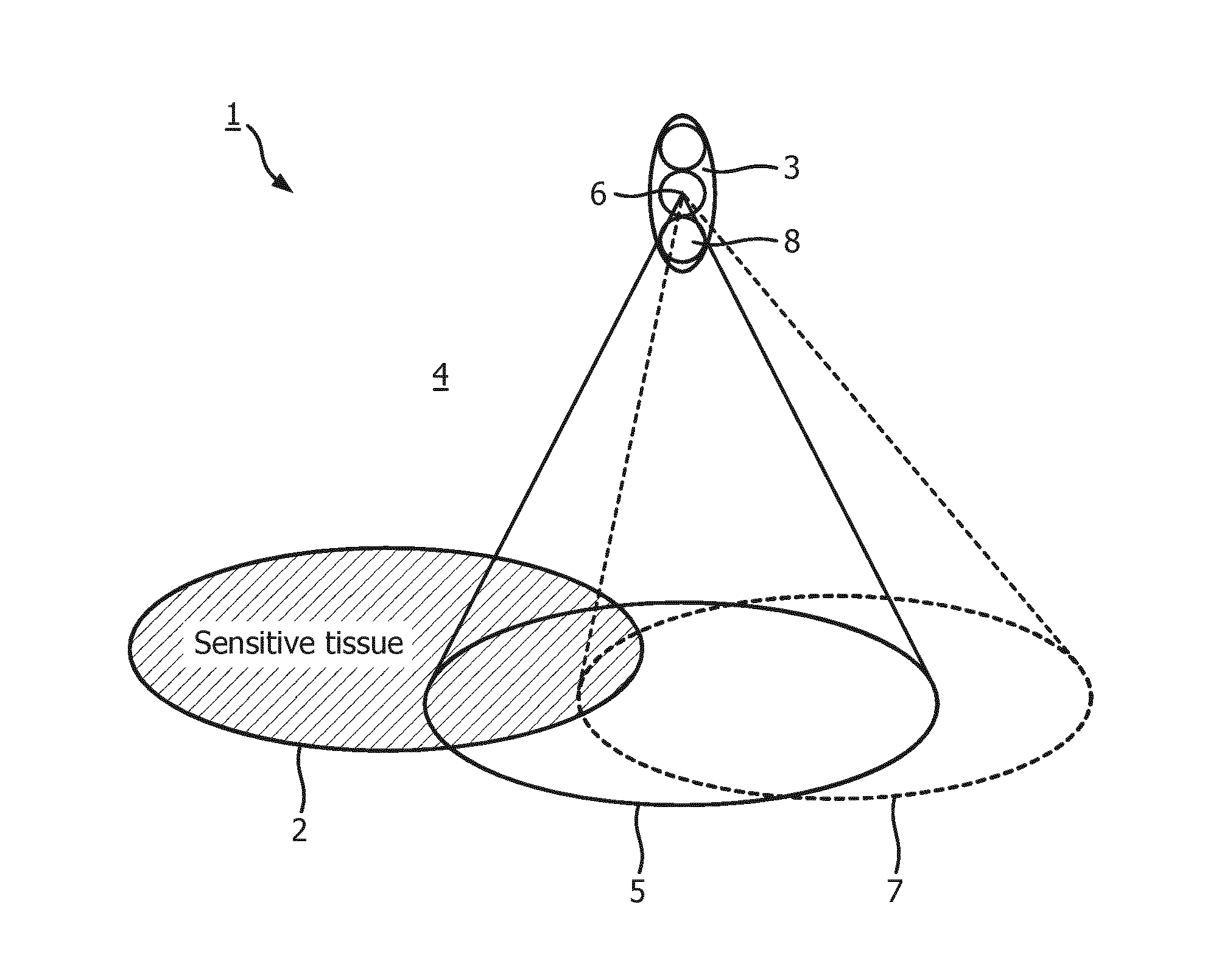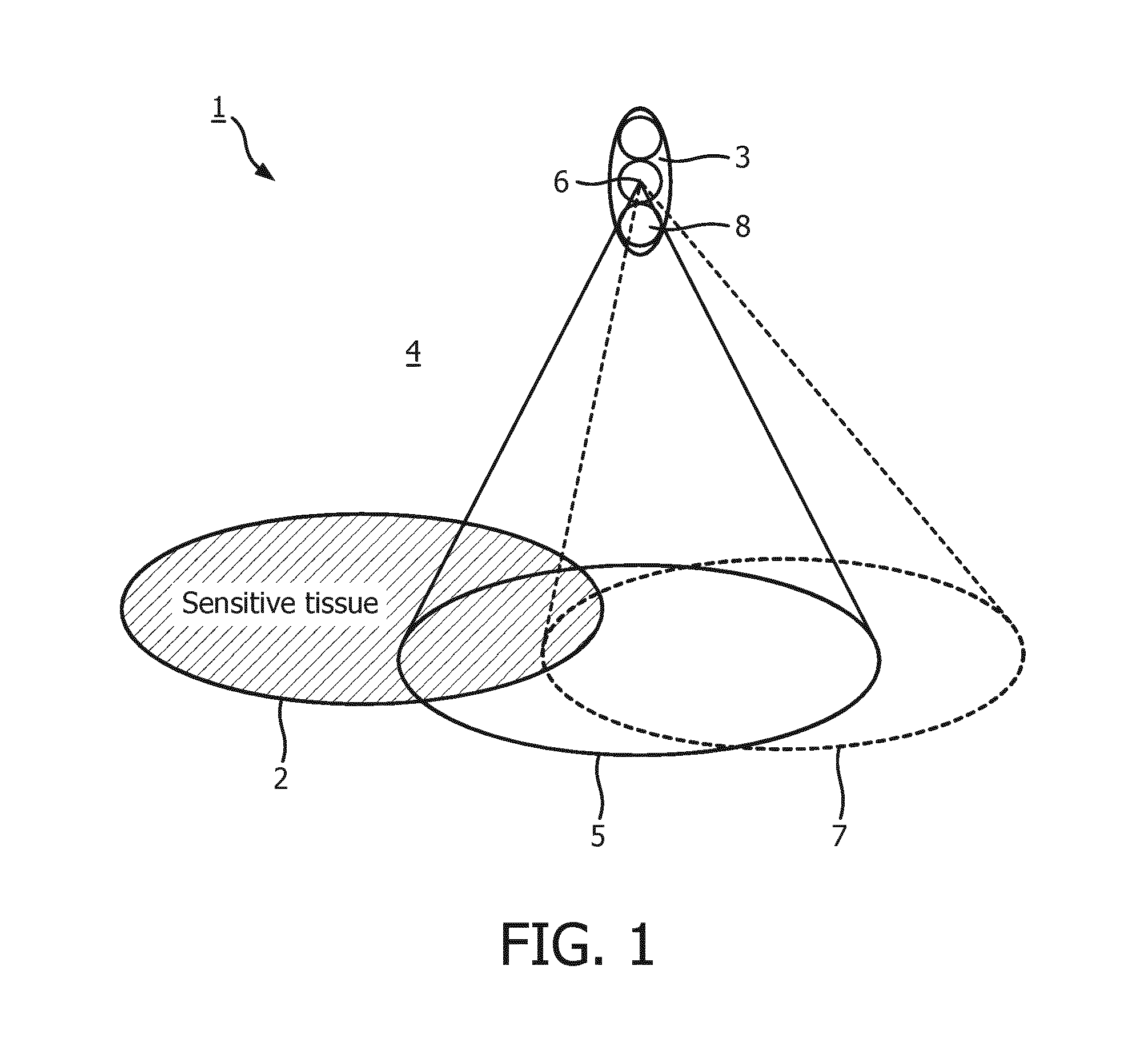Hifu treatment optimization in vicinity of sensitive zones
a sensitive zone and ultrasonic treatment technology, applied in the field of high intensity focused ultrasonic treatments, can solve the problem of practicably impossible to determine optimal exposure limits, and achieve the effects of minimizing the exposure of at least one sensitive zone, minimizing the exposure of sonication, and efficient monitoring
- Summary
- Abstract
- Description
- Claims
- Application Information
AI Technical Summary
Benefits of technology
Problems solved by technology
Method used
Image
Examples
Embodiment Construction
[0033]FIG. 1 shows a schematic illustration of a subject of interest 1 having a sensitive zone 2, which is a scar in this embodiment. Furthermore, a zone of cancerous tissue can be seen in the FIG., which corresponds to a target zone 3 for treatment with an ultrasonic irradiation device, which is HIFU device in this embodiment. The HIFU device is not shown in the FIG. The target zone 3 is heated according to pre-defined heating requirements using ultrasonic irradiation from the HIFU device. The pre-defined heating requirements in this embodiment refer to a thermal dose to be applied to the target zone 3 to ablate the tissue within the target zone 3.
[0034]The sensitive zone 2 is defined within an area 4 covered by ultrasonic irradiation device based on a diagnostic image, which is in this embodiment a 3-dimensional MR scan provided using a magnetic resonance imaging device. The diagnostic image covers the area 4 covered by ultrasonic irradiation device, which includes the target zone...
PUM
 Login to View More
Login to View More Abstract
Description
Claims
Application Information
 Login to View More
Login to View More - R&D
- Intellectual Property
- Life Sciences
- Materials
- Tech Scout
- Unparalleled Data Quality
- Higher Quality Content
- 60% Fewer Hallucinations
Browse by: Latest US Patents, China's latest patents, Technical Efficacy Thesaurus, Application Domain, Technology Topic, Popular Technical Reports.
© 2025 PatSnap. All rights reserved.Legal|Privacy policy|Modern Slavery Act Transparency Statement|Sitemap|About US| Contact US: help@patsnap.com


